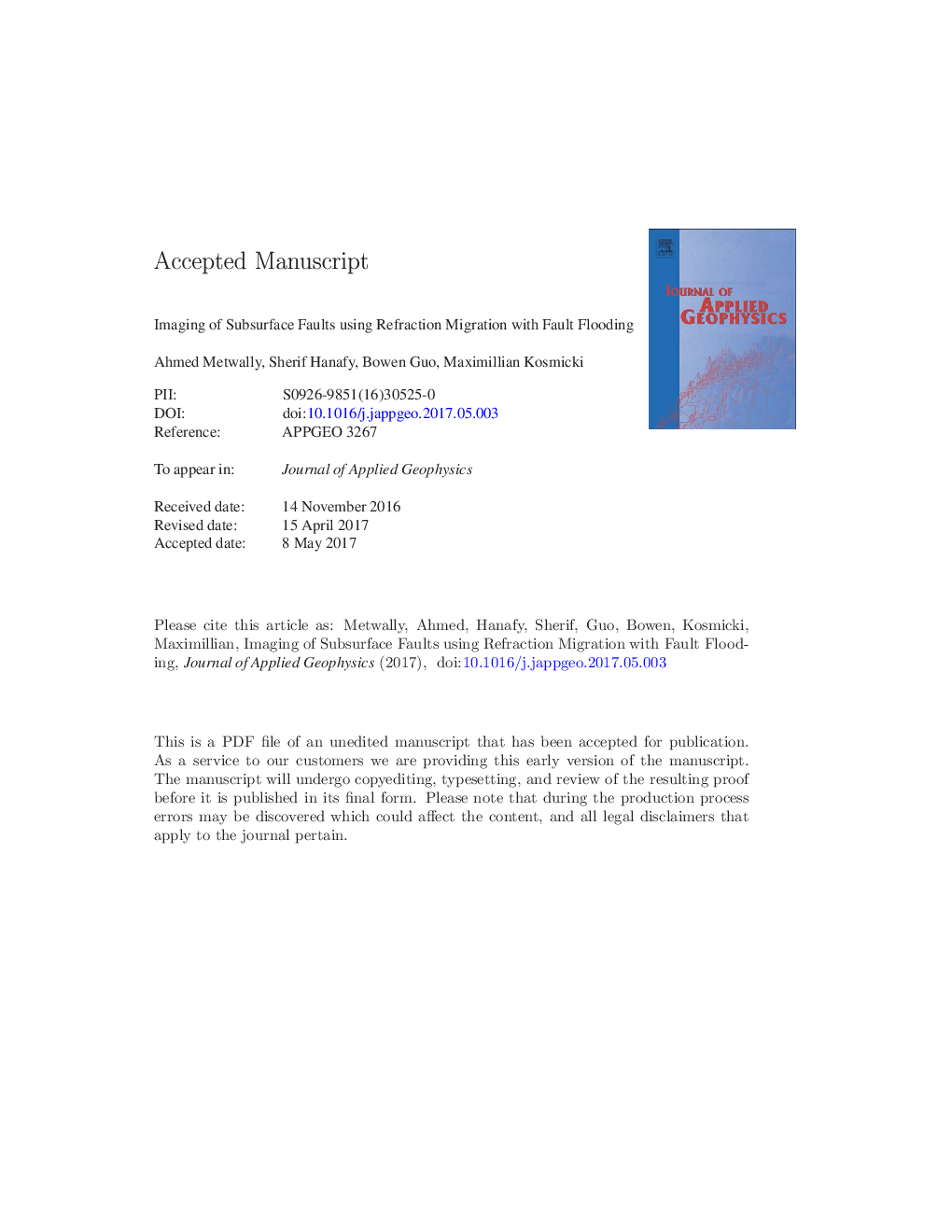| Article ID | Journal | Published Year | Pages | File Type |
|---|---|---|---|---|
| 5787127 | Journal of Applied Geophysics | 2017 | 39 Pages |
Abstract
We propose a novel method for imaging shallow faults by migration of transmitted refraction arrivals. The assumption is that there is a significant velocity contrast across the fault boundary that is underlain by a refracting interface. This procedure, denoted as refraction migration with fault flooding, largely overcomes the difficulty in imaging shallow faults with seismic surveys. Numerical results successfully validate this method on three synthetic examples and two field-data sets. The first field-data set is next to the Gulf of Aqaba and the second example is from a seismic profile recorded in Arizona. The faults detected by refraction migration in the Gulf of Aqaba data were in agreement with those indicated in a P-velocity tomogram. However, a new fault is detected at the end of the migration image that is not clearly seen in the traveltime tomogram. This result is similar to that for the Arizona data where the refraction image showed faults consistent with those seen in the P-velocity tomogram, except that it also detected an antithetic fault at the end of the line. This fault cannot be clearly seen in the traveltime tomogram due to the limited ray coverage.
Keywords
Related Topics
Physical Sciences and Engineering
Earth and Planetary Sciences
Geophysics
Authors
Ahmed Metwally, Sherif Hanafy, Bowen Guo, Maximillian Kosmicki,
